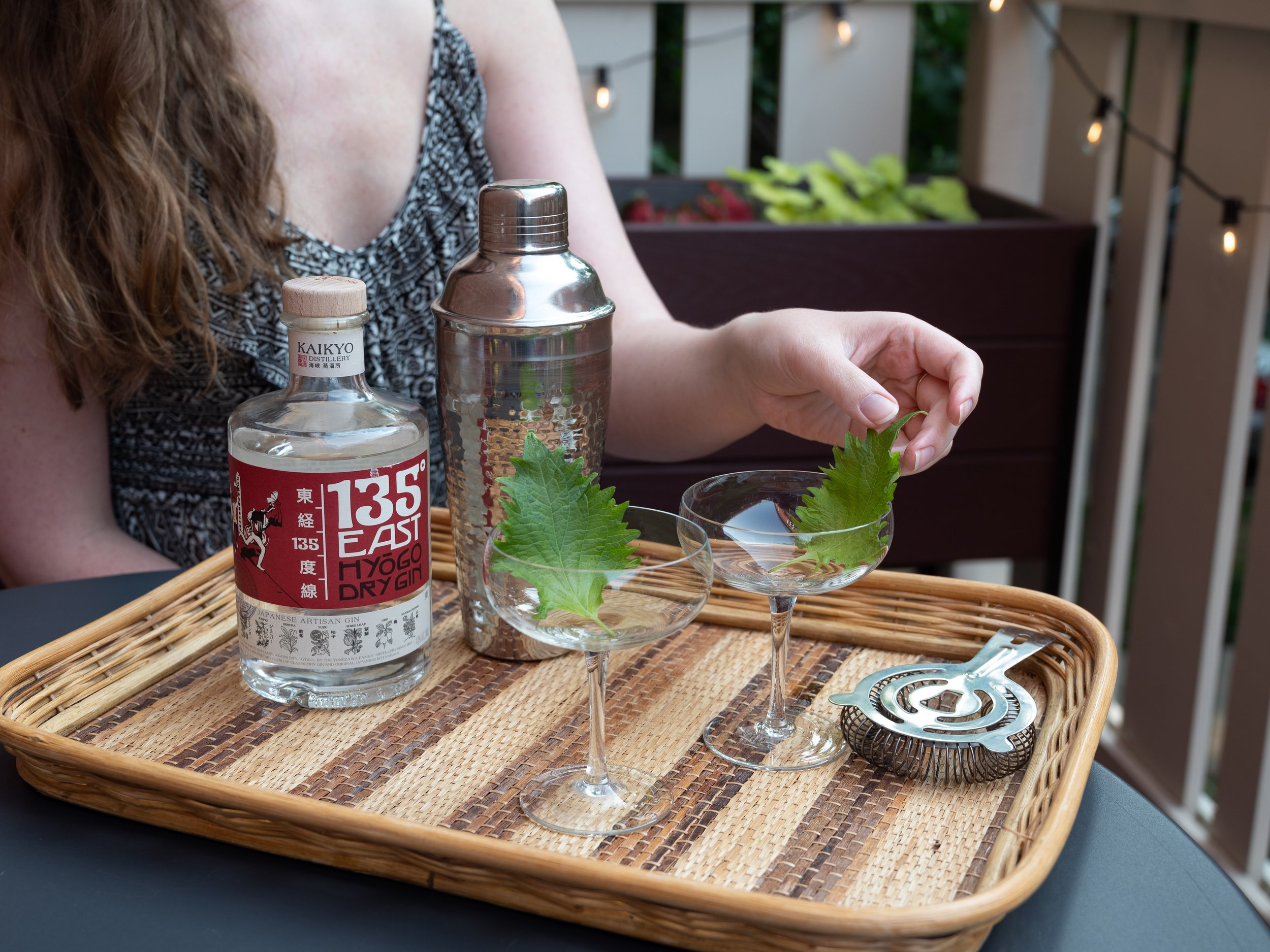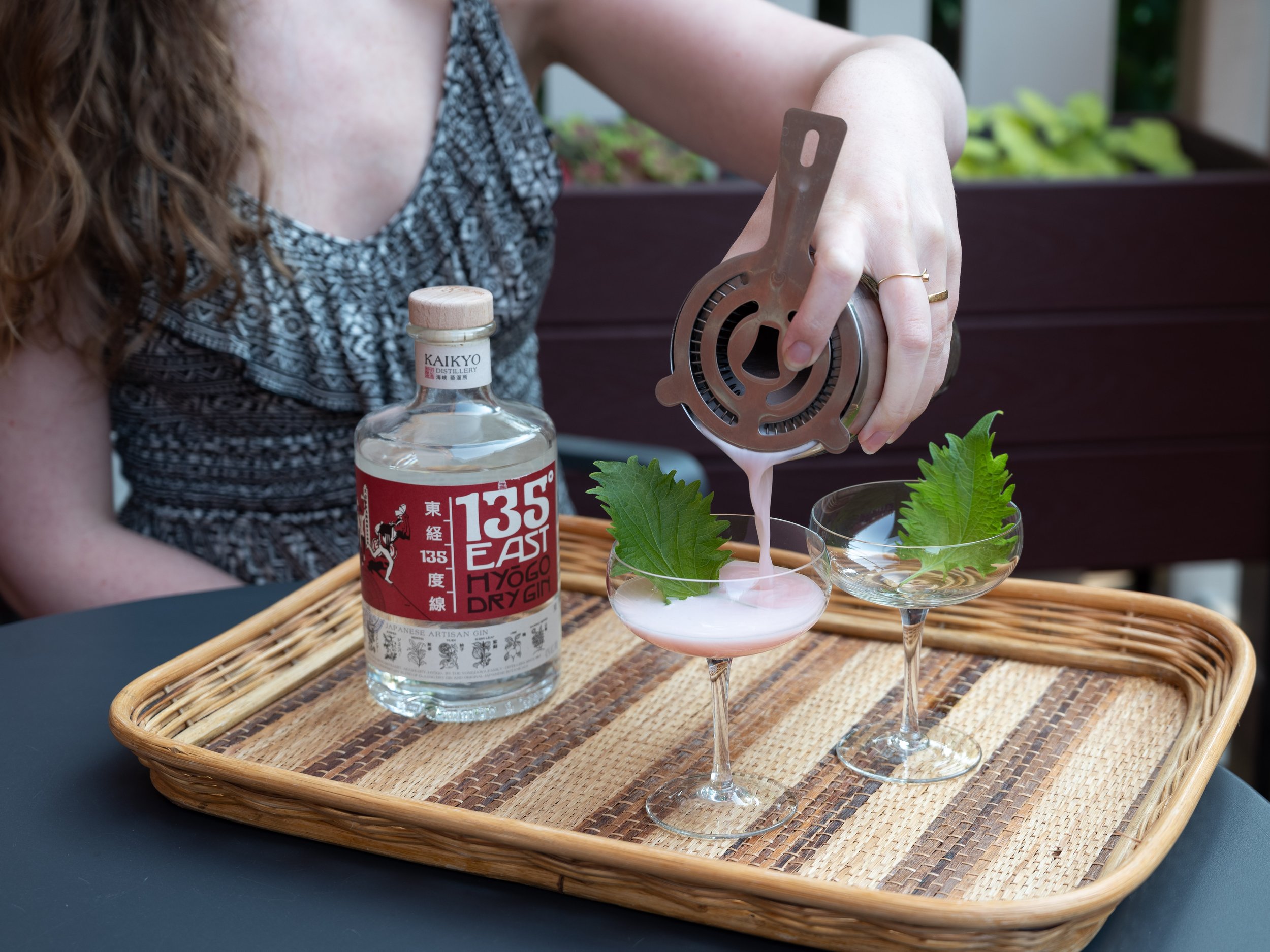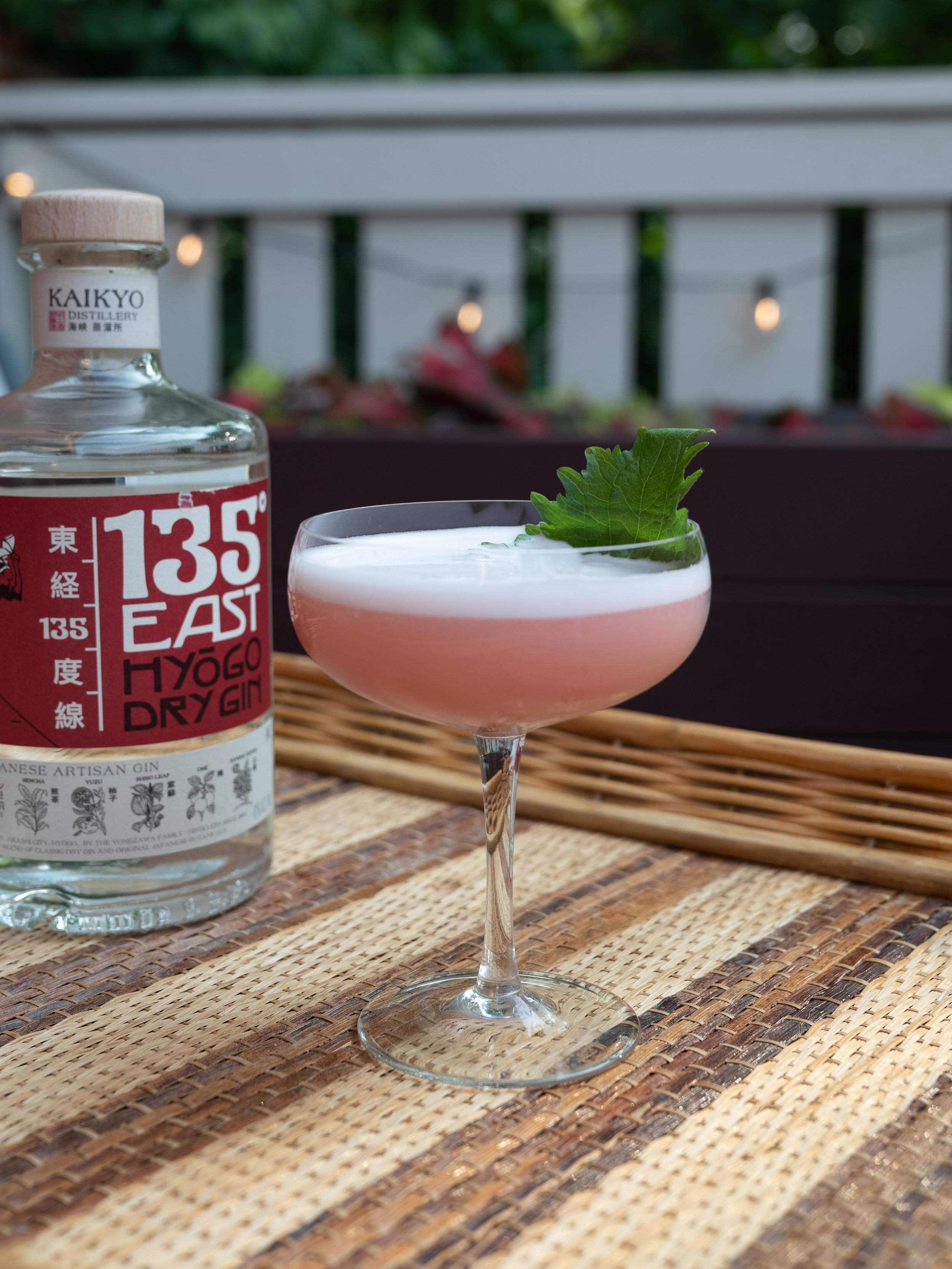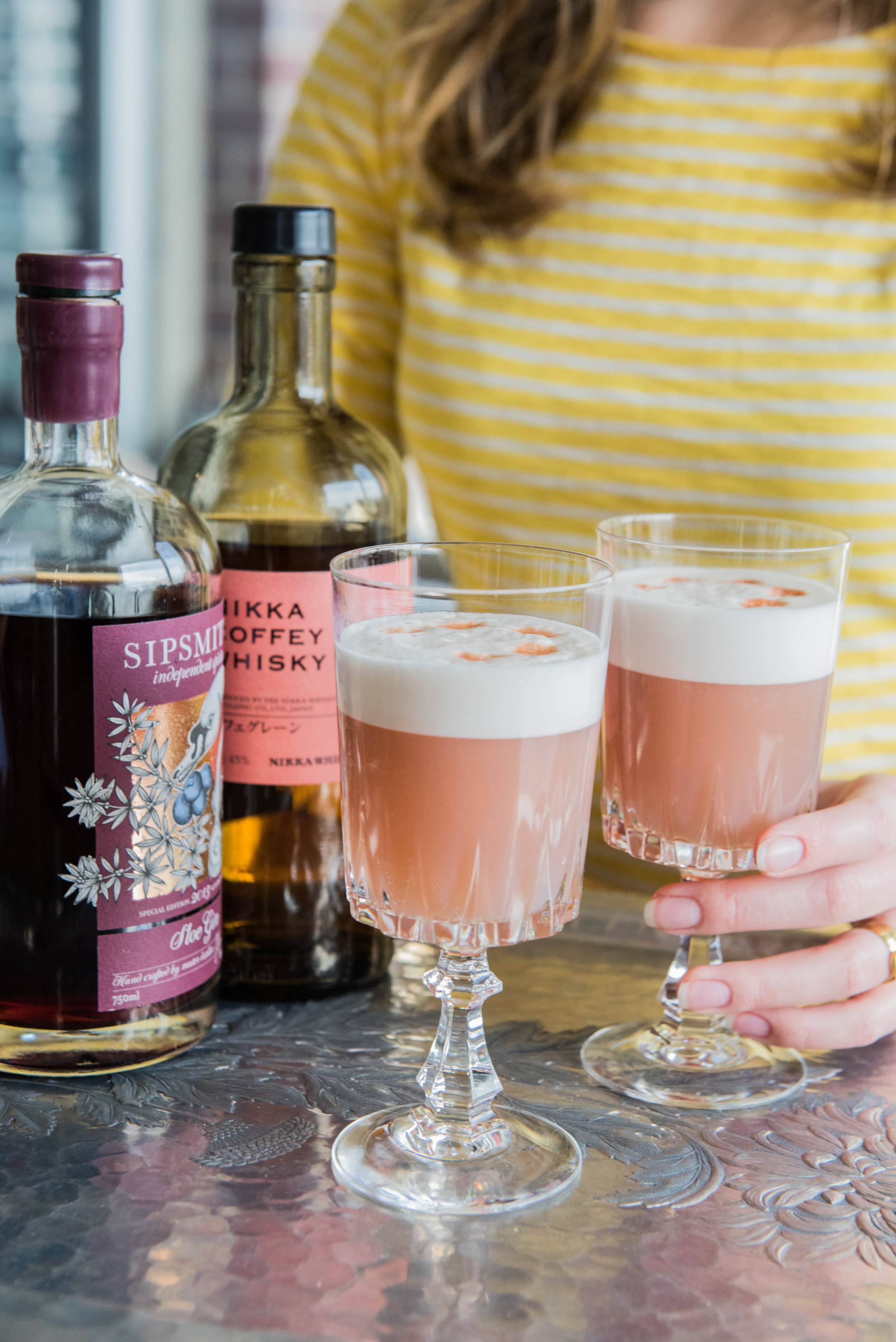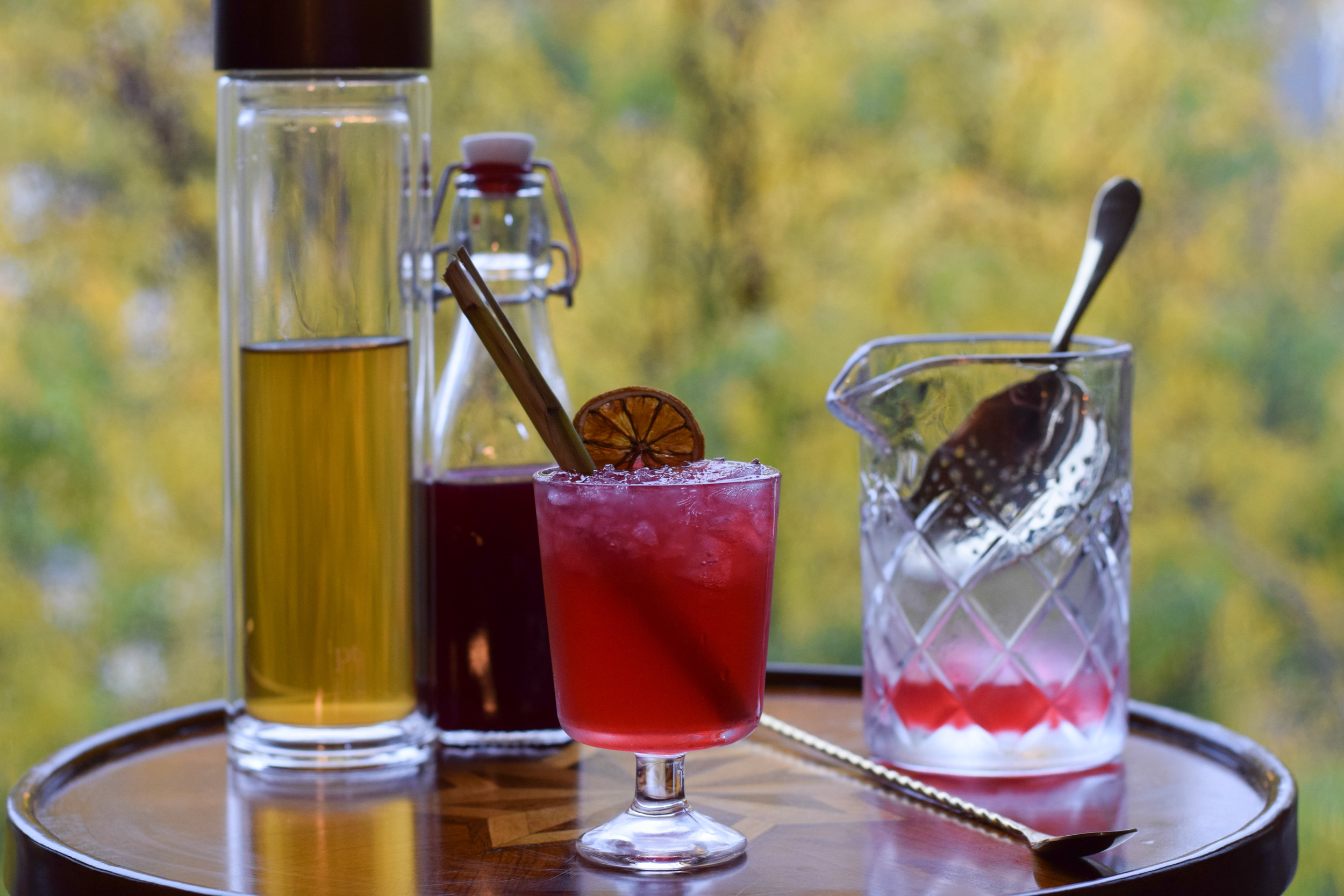Eastern Market
If you live somewhere with seasons, you’ll probably join me in celebrating the coming of sunshine, warmth and the joy of Farmers Markets. I’d say it’s likely thanks to my grandfather that I get unreasonably excited for any locally produced consumable goods, the more obscure the better. One of my favorite stories is of my grandfather hiking the Carpathian Mountains to track down a honey farm he heard of in town, successfully finding it and then somehow accomplishing having a barrel of honey delivered to his apartment in Kyiv.
I can’t say I have similar levels of dedication, but I do love the experience and adventure of uncovering local goods. Following a homemade cardboard sign to eventually buy homemade maple syrup out of a friendly couple’s home is much preferable to aimlessly wandering the grocery store.
This cocktail is inspired by local produce with a bit of a twist - an East meets West of early summer flavor. Since I built this drink around a Japanese gin I wanted to start with seasonal local flavors I was familiar with then add something new to me. The rhubarb and strawberries this time of year have been rich, red and absolutely gorgeous, so it was an easy choice to start with a strawberry rhubarb base. If you’re in Chicago, I recommend you grab some rhubarb from Seedling Farm because it’s deep red all the way through and bursting with flavor.
I then went back to the gin for more inspiration. 135 East Gin is a fantastic blend of Eastern and Western botanicals. Building on a traditional London Dry Gin style, Master Distiller Kimio Yonezawa added sencha, yuzu, shiso leaf, ume and sansho pepper, as well as a bit of distilled Junmai sake. The result is a gin with a delicious blend of leafy, citrus and spice flavors.
Shiso leaf is a botanical I had heard about but had never played around with, so I figured I’d give it a try. You can most easily find it at an Asian grocery store (I grabbed mine from Mitsuwa Market). The flavor is truly unique - think a mix of basil and mint with a hint of anise sweetness. I blended the shiso leaf with sugar to release more of the oils and then added the herbal sugar once the rhubarb and strawberries had fallen appart and fully steeped in my syrup. This allowed the flavor to stay fresh and vibrant.
Finally, I added a farm egg and lemon to create a satisfying foam and meld the powerful flavors of this cocktail together. The resulting cocktail was perfectly tart and jammy with uplifting notes of herbal brightness and spice.
Eastern Market
1.5 oz Japanese gin (135 East Gin recommended)
1 oz strawberry rhubarb shiso syrup*
0.5 oz lemon
1 egg
1 shiso leaf, for garnish
Press shiso leaf into a coupe glass for garnish. Add all other ingredients to a shaker without ice and shake to build foam, releasing pressure as needed. Add ice and shake to chill, then strain into coupe glass. Enjoy along with all your other tasty Farmers Market finds.
*To make syrup, add 1 cup of water, 1 cup strawberries and 1 cup rhubarb to a pot. Bring to a simmer and cook for 15-20 minutes, until the strawberries and rhubarb fall apart when pressed with a spoon. While this is cooking, blend 1/2 sugar with ~10 shiso leaves. Remove strawberry rhubarb mixture from heat and stir in shiso leaf sugar until dissolved. Use a fine mesh strainer and a spoon to strain. Allow to cool and store excess in the fridge for up to 3 weeks.

